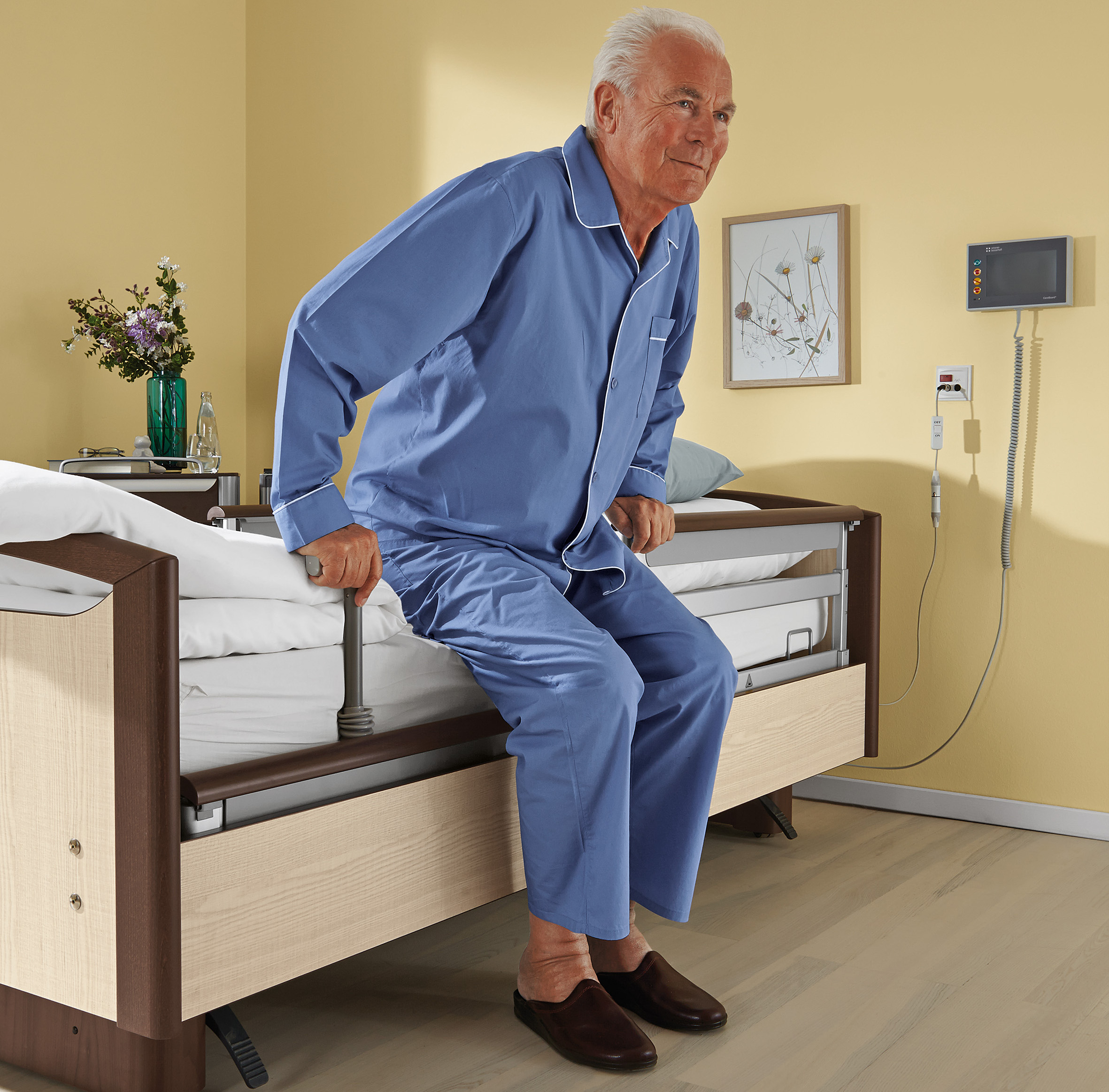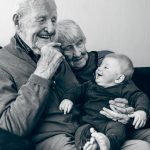The 85-year-old Hans crashed on the icy sidewalk while carrying bread rolls home. He broke his arm and had to go to the hospital. Shortly after his arm is plastered, the doctor at the hospital advises him to begin early mobilization. Still in the nursing bed, he trains with a bed bike. At first attempts he is uncertain and is afraid to fall again. That’s why a physiotherapist assists him and does not leave his side. Soon he can stand alone and strokes with a rollator through the hospital. After a few days, he is on his own without aids. His vital signs are good, he is released and allowed to go home. Because he quickly started to move after the fall, he overcame his fear of falling. At home he walks safely to the bakery as he used to. Hans quickly got to his feet because he was mobilized early.
Advantages of early mobilization
Early mobilization stimulates blood circulation and prevents thrombosis, pneumonia or bedsores. The body and circulation are stimulated and patients maintain the sense of balance. Those who do not mobilize lose muscle mass and thus strength, which later leads to a longer hospital stay and a longer rehabilitation.
In addition: After a fall, older people are often afraid to fall down again and avoid running or stooping. Mobility continues to decline and falls again more likely. „That’s why it’s important to mobilize quickly to put an end to fear early. Patients also regain their body feeling and balance more quickly, „explains Tihana Garib Physiotherapist at the Klinikum Christophsbad in Göppingen (Germany). In addition to the health benefits, early mobilization saves money by reducing hospital or rehabilitation time and avoiding more time-consuming care.
Early mobilization in practice
„Immobility can start within the first 72 hours after a movement-restricting event,“ explains Anja Fischbeck, furnishing manager in a Bavarian nursing home. That’s why it’s important to get the patient moving as quickly as possible. Depending on the condition or surgery, the mobilization may begin in consultation with the attending physician on the day of the event. And depending on the condition of the person concerned, there are independent, assisting and completely guided forms of early mobilization. These range from sitting upright or standing at the edge of the bed to breathing gymnastics and equipment-assisted training.
Passive patients are stored with various storage materials such as pillows, blankets, seating blocks and even hammocks in early mobilization positions. Where in the hospital often more diverse options than in nursing homes or home care. Thus, in a immobility of the upper body by a bed bike, the cardiovascular system is stimulated and mobilized the lower body. Or by sitting upright in a mobilization chair after surgery stimulate the circulation and facilitate breathing. „Such devices relieve the daily routine of the therapy, but are not necessary,“ explains Garib, who studied physiotherapy in Zagreb. „In home care and nursing home, as a therapist you have to be a bit more creative, depending on the equipment“.
„Especially when an accident happens in the home environment, relatives play a central role,“ clarifies Fischbeck. Mobilize with a briefing from a doctor or physiotherapist also family members or staff of the outpatient nursing service. Modern care beds help by allowing you to drive yourself electrically in special mobilization or sitting positions. Incidentally, this also applies to work in nursing homes. „We have an obligation to offer activating care,“ explains Fischbeck, who is a qualified business administrator for hospital and social management.
Potential for improvement
However, early mobilization has its limits. „There’s still a lot of potential for improvement in terms of collaboration, communication between the professions and continuing education,“ says Garib. So it often lacks staff and equipment in social facilities. The need or the benefits of early mobilization are partially unaware of those affected. „Often the mobilization fails because of the lack of cooperation of the person concerned“, says Fischbeck.
Conclusion: Early mobilization is an important measure. It improves recovery, prevents immobility and protects against fear of falling. The possibilities are manifold, whether in the hospital, nursing home or at home.


